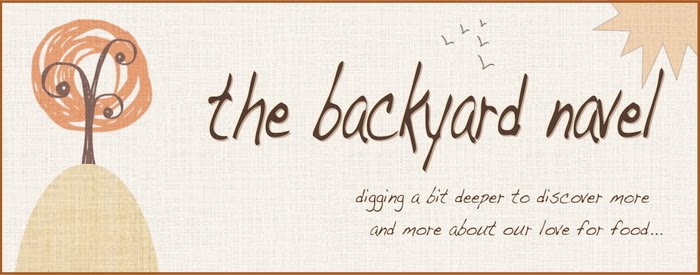i once worked at a restaurant that served two types of salmon. one type was five dollars less than the other, and obviously sold far more in quantity than that which cost more. this restaurant is one of many belonging to what is possibly the greatest seafood empire in the country, so diners certainly sit at its tables with a sense of trust, that regardless of what they order, by dining there they're treating themselves to something special. but let's really think about this. truly. if one piece of salmon is listed on the menu for $19.95, and the other for $24.95, shouldn't we be looking up from our menus, scratching our heads, and asking our table-mates, why?
so the question is now before you. seriously, why do you think this is?
well, let's start by building the differences between these two types of fish. the $25 salmon is from the wild, and the $20 salmon is not. reason enough for a difference of five bucks, right? if that's the case, and if the $20 salmon isn't from the wild, could you confidently answer if i asked you, where the heck is it from then? if it's not wild, what the heck is it?
and that's the problem that people grapple with. on the whole, the problems with fishing ethics are so tertiary in politics and media, so muted, that people just don't know what's going on. don't know where their food is coming from (which, funny enough, parallels the factory farming problem far too much). and that's because when it comes down to it, we're taught to understand that cows graze and do so on land, birds fly and do so through the air, and fish, well they swim, and swimming is only done through water. and water is something our planet has lots of, so there should be lots of fish. one plus one then equals: shouldn't all fish be from the wild? the answer is yes, but yet, somehow the laws of nature have been tinkered with, and now we have fish coming from that thing that cows, the land grazing animal, call home. farms.
so how about this: one salmon is from alaska, and the other is from the atlantic. now, do you know which is wild caught and which is farm raised? do you know why?
my guess is, most people know that alaskan salmon is the cream of the crop. i'd even go so far as to say this is one the first fish most of us had ever known. remember those nature videos from our childhood? disney was infamous for them, airing often on the wonderful world of disney, remember? the stunning wildlife images of a day in the life of a grizzly bear? of the bear lurking over a shallow stream, her paw swiping at the water and pulling from it a flopping fish? and that fish, the one she'd strip clean of flesh and feed to her cubs, well, that's wild alaskan salmon. and yes, we pay top dollar for it.
but why does it cost so much more than atlantic salmon? hell, if it's atlantic salmon, it's got to be wild too, right?
on friday, mark bittman wrote this in his blog about "discovering alaskan king salmon:"
What an odd history salmon has had, not only in my lifetime but in the history of the world. (There was once so much salmon in the rivers of the Northeast that according to some historians, servants complained about being fed the fish too often. Supposedly.)
Like so many baby-boomer East Coasters, I experienced salmon first as a canned fish. (Tuna too, of course. Who knew?) It was also an absolute luxury item at white tablecloth restaurants; I might have eaten it fresh two or three times – max – in the 60s and 70s. That’s because Atlantic salmon (of which there is only one species) had become not only overfished but endangered. (You can’t sell wild Atlantic salmon commercially.)"you can't sell wild atlantic salmon commercially." did you catch that? do you realize the weight of those words? they're telling us that to all but a small minority of this world, true atlantic salmon, the stuff that makes its home the way nature intended, in the wild, does not exist. so what then is this stuff called "atlantic salmon?"
so what is this mystery fish? and why does it dominate restaurant menus all over the country? again, we'll find a parallel to the corporate giants who have decimated our country's beef, pork, and poultry farming. the shades might be drawn when it comes to the dirty work, but make no mistake these corporate entities are slipping in and out of bed with the world's governments night after night.
spend the three minutes it takes to watch the video below. it's three minutes spent better than almost anything else you could be doing right now, including reading this blog post. again, so much of america's problem when it comes to food is the lack of knowledge we have about what it is, and where it comes from.
i realize how difficult it is to sit down and spend twenty minutes, let alone the three it took to watch that clip, but that's how long this documentary is. just twenty minutes. and in twenty minutes, you're learning more about this food than you've ever known about it. if that's not enough to convince you to watch the entire film, what is?
and that seafood restaurant i worked at in boston? it's called legal sea foods. yeah, you might've heard of it. when the company brought wild alaskan salmon to all of its restaurants six years ago, here's what roger berkowitz, the ceo and president of the giant chain, had to say about wild alaskan and atlantic salmon:
There's nothing wrong with farmed salmon. It's perfectly fine to serve. But wild salmon has different flavor characteristics. It's more interesting. And we're in the fish business--it's incumbent upon us to offer products that others would have trouble getting.apparently, they're having trouble getting the wild stuff just like everyone else now. incumbent, or not.
(legal sea foods' wood-grilled salmon,
no. the trouble roger berkowitz, and the rest of the consumers who purchase and sell atlantic salmon (and we're talking a massive amount of people here) have is an environmental trouble. it's a trouble that for those of us living today, especially those of us completely detached from our planet's well being, is irrelevant. it's as pesky as a house fly buzzing though the kitchen on a summer day. we can just ignore the thing and get by just fine, and leave the problem for someone else to deal with later on.
(sea lice, a tremendous infector of atlantic salmon,
changes are being made to farming methods, but is it too late? and is change coming fast enough?
but americans want to eat good food, and do so with as little damage inflicted upon their checking accounts as possible. and, i have to imagine, roger berkowitz (a semi-finalist of the recently announced james beard award for outstanding restaurateur) is only too pleased to oblige.










I recently went vegan but was considering allowing wild fish (as it doesnt have the same issues as something raised in a factory farm) and this makes me even more resolved to only eat wild IF i eat any at all... maybe it will be saved for VERY special occassions.. i do love sushi. Do you know if they use wild in sushi??
ReplyDeleteI have tried to reach out to Legal Seafood a number of times. I wanted to encourage them to join "Teach a Man to Fish" and to participate in "Teach a Chef to Fish", to use their leadership to help educate the public and their buying power to make a difference.
ReplyDeleteI got nothing back from them. De nada. Zip.
The waste from one salmon farm can equal that of major city. The spread of antibiotics is also a problem. The fish in: fish out ratio is yet another problem. Many estimate it takes as much as 6lbs of feeder fish to produce 1lb of farmed salmon. We are putting too much pressure on the ecosystem, creating waste and all for something unnecessary.
Go Wild. Wild Alaskan Salmon and eat it sparingly - diversify the menu.
Thanks for sharing this!
Being able to quantify and explain the difference between two menu items or two fish at the seafood counter is something we need badly. Much of the data is already available, but it isn't communicated effectively. If it were possible to combine the supply chain knowledge of the distributor with the fisheries knowledge of programs like SeaChoice, it could have a really tremendous impact. Some people are already working on solutions, like http://www.cleanfish.com/ and http://www.fishchoice.com/, but we'll hopefully continue to see more.
ReplyDeleteHow does one know if the "wild salmon" served in a restaurant, really is viable wild salmon?
ReplyDeleteFirst off, our consciousness needs to improve on all aspects of seafood, not just salmon. With that, the Monterey Bay Aquarium has established a program that constantly studies and analyzes the status of catch around the world, and rates their finds in a guide that's available for anyone to use (broken down depending on where you live in the U.S.).
ReplyDeleteGo here to get it: http://www.montereybayaquarium.org/cr/cr_seafoodwatch/download.aspx
Right now, Wild Alaskan Salmon (and that's what the menu needs to read, be it King, Sockeye, or Coho) is the only salmon you should feel good about eating. Even then, eat in moderation. The demand is far to great if we consistently eat this fish and will eventually deplete the supply if it remains the only sustainable salmon option.
The Western U.S. wild salmon fishing is on the rise, and hopefully even California will enter the picture as a local option, which is what we need. Currently, Wild Salmon from Washington is recommended as an alternative to Wild Alaskan.
Which leaves us with farmed and Atlantic Salmon - which, like I point out in the post, is farmed salmon from European countries on the Atlantic seaboard like Norway, Scotland, Ireland, and Iceland.
That said, some European salmon farms are on the upswing in practices and soon enough we may see a shift.
So when you're at a sushi bar and all the menu reads is "salmon." Ask where it's from. Most sushi bars will print "Wild Alaskan" or "King Salmon" because it costs them far more to purchase, and hence will charge you more to eat it. If you're at Maggiano's or even a place like Ruth's Chris, even then, avoid the salmon unless it reads... "Wild Alaskan!"
The other thing to do? Try other fish! Go to the link above and find out what other options there are for you. Just because you don't recognize the name of this fish doesn't mean it's not worth eating. You'd be surprised how good these fish are, and might even like them better than the beloved salmon...